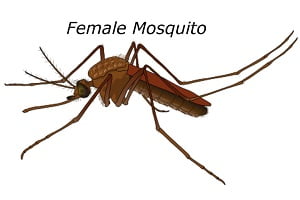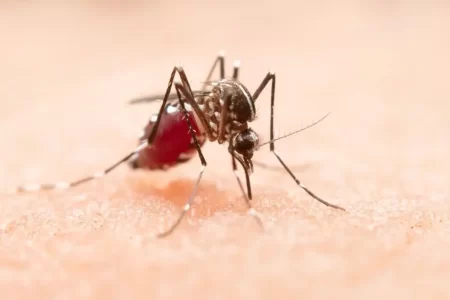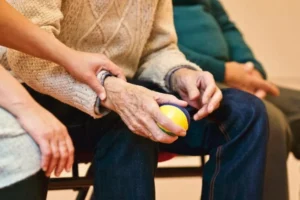Preventive Measures to Control Malaria
- Updated on: Jul 6, 2024
- 4 min Read
- Published on Feb 3, 2021

Malaria is an acute infectious disease caused by Plasmodium falciparum and is spread by a vector mosquito known as female anopheles mosquito. Control of malaria is a challenging task as it needs to control all the three living beings involved, i.e., man (the host), plasmodium (the agent), and mosquito (the vector). Vector and parasite are highly accepted in nature. There are useful tools to combat malaria, but parasites and mosquitoes evolve and circumvent those tools with time. To achieve sustainable control over a disease like malaria, a combination of new approaches and tools, also know as next generation strategies, should come into play. Healthcare professionals and researchers play an essential role in developing those next generation strategies to combat malaria. Malaria causes many deaths in different parts of the world; it shows a significant impact on the health of pregnant women, infants, and children. Malaria also causes malnutrition, which is one of the causes of children’s deaths worldwide. The regions suffering from malaria-endemic show severe cases of maternal anemia and premature, and the birth of low weight babies. Researchers and healthcare professionals are working on the cause and the impact of malaria on pregnant women and children to develop new tools and methods to control malaria.
Malaria As a Public Health Problem
Malaria generally affects the rural area and tribal population and the variety of places where water gets stagnated during the rainy season. Ponds, marshy areas, seepage water, pools, river beds, agricultural channels, lakes, and ditches are favorable environments for breeding mosquitoes. Many other diseases are transmitted by mosquitoes like chikungunya, dengue, yellow fever, zika, etc. However, malaria puts the most significant economic burden. Malaria is also known as a financial misfortune; it impacts the intellectual and physical standards and again interrupts prosperity and economic progression.
In India, 90 – 95% of the malarial cases are reported from rural areas, and 5 – 10% of the patients from urban areas due to non-existing surveillance. International efforts have controlled malaria since the late 50s and 60s, but due to some setbacks in malaria control programs, malaria is back with a vengeance. Control of malaria is only possible with community efforts; relying on government schemes to control this disease will increase the chances of danger.
Control Measures for Malaria
In one of the conferences held by the WHO ministry, it is suggested to stop emphasis on vector control and to divert their focus over treatment. This strategy includes early diagnosis and treatment, awareness about personal protection measures, prevention of deaths, early detection and control, and integration of public health centers. To control the condition of malaria, control of man and mosquitoes is difficult as man is a moving target and can take the disease with him anywhere. In contrast, mosquitoes are also moving targets and are evolved to show resistance against insecticides. Therefore it is important to control and target non-flying larvae and eggs. Parasites are also highly adaptable to the environment and developed resistance against some of the drugs. For effective control of malaria:
- First, we need to target the host.
- Then the vector
- Keep on trying to develop new drugs and vaccines against the agent.
We need to take personal protective measures to prevent malaria in individuals; this will lead to a decrease in the parasite load and lower the rate of spreading of the disease.
Host – the Man
The main problem is accessibility, compliance, and availability of protective measures and treatment due to poverty and lack of awareness. The main motto is to treat the affected and protect the unaffected.
Vector – the Mosquito
To control vector, mosquito breeding needs to be stopped or arrested; the use of mosquito repellents can prevent them from biting. But, mosquitoes are resistant to insecticides and are also compliant with a human.
Agent – the Parasite
To prevent the disease’s progression, it is essential to kill the asexual forms of the parasite and ensure full treatment. Sexual forms of the parasite also need to be killed to prevent the spread through a mosquito. But, the main problem here is the resistance of parasites against the drugs.
Role of Man in Malaria Control
Man is the most critical link in malaria spread as well as control of the malarial disease. It is essential to emphasize awareness by educating people about management and prevention. This will help them to understand the breakpoints of the chain of malaria. Educating doctors about treatment and diagnosis should also be done.
Preventive Measures to Control Malaria
Radical Treatment
Radical treatment is given with primaquine. A single dose of this drug is given to sterilize gametocytes. This treatment is given to all the confirmed cases. Primaquine has a dose of 14 days, which helps in destroying hypnozoites in lives and prevent relapse.
Early Diagnosis and Treatment
Early diagnosis and treatment are themselves enough to control the epidemic. By this measure, the load of the parasite in the environment is reduced, and transmission of the disease is also reduced.
Personal Protection
Personal protection measures include chemoprophylaxis against malaria and protection against mosquito bites. Protection against mosquito bites can be achieved by using mosquito nets while sleeping, using anti-mosquito repellents, and preventing mosquitoes from inside the house, the doors and windows should be closed in the evening. This measure limits the blood meal for the female anopheles mosquito and thus, the development of eggs is reduced, and breeding will be stopped.
Breeding Pattern and Incubation of Mosquito
The breeding pattern of mosquito is changed with climate changes. Mosquitoes have a life expectancy of 50 days, and they require unpopulated water and warm condition for reproduction. Female anopheles mosquitoes can fly up to 1 – 2 Kilometers, and then they take rest over warm walls, usually fly close to the ground. During the rainy season, the number of breeding sites is increased, thus the mosquito population. With the rise in humidity incidence of malaria also increases. When the temperatures drops down to 20 degrees and less, the rate of breeding also reduces.
The time of development of malaria in a man differs and depends on the strain of the parasite. For P. falciparum, it is 7- 30 days, but in P. vivax, P. ovale, and P. malariae, the incubation period is around 10 days.











1 Comment
I am thankful that I found this weblog, precisely the right information that I was looking for! .